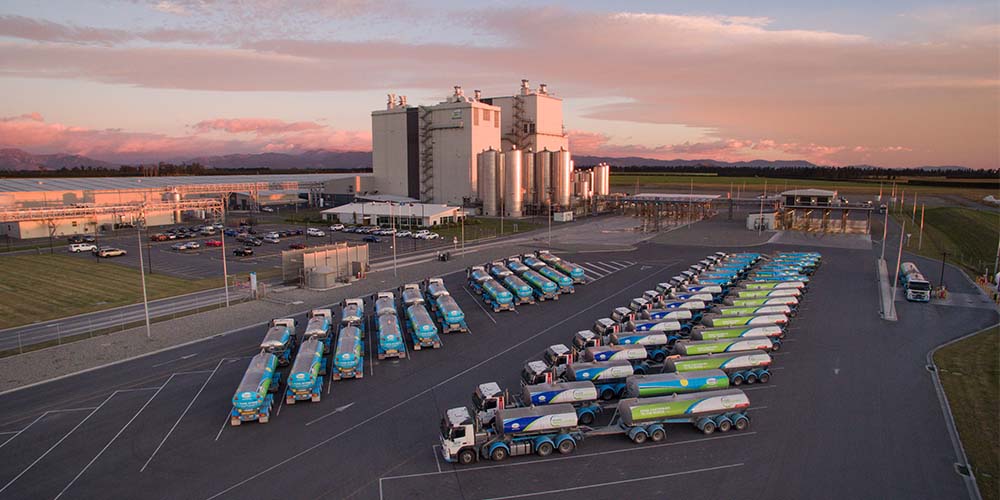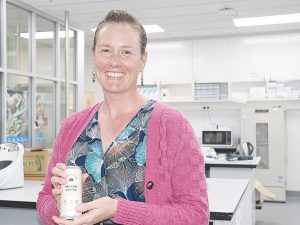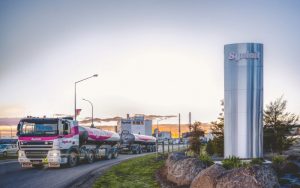
The country’s biggest dairy processor said using electricity to convert its South Island plants from coal is technically challenging and would cost “well over $200” for every tonne of carbon saved.
Fuel switching is the single most effective thing the company can do to reduce its emissions the firm’s sustainable energy and utility manager Linda Thompson says.
While there has been much discussion by the Government about the potential for firms to use surplus power when the Tiwai Point aluminium smelter closes, Thompson said its focus is more on wood, which it has used at its Brightwater plant near Nelson and is installing at Te Awamutu.
Even without the cost of getting increased power supplies to a site, Thompson said converting an existing plant to incorporate new technology is not easy and can be costly.
Electricity is not a “silver bullet” and comes with “significant engineering challenges.” Wood biomass is less complex.
“That is the direction we are headed in,” Thompson told delegates at the electricity industry’s Downstream Summit in Wellington yesterday.
Fonterra accounts for about 20% of the country’s carbon emissions. About 89% of those are generated on-farm, with about 10% from the company’s manufacturing plants.
Most of the latter come from the company’s sites fuelled with coal – three on the North Island and seven on the South Island.
The Government late last month announced $70 million of funding toward transmission upgrades and connection costs to help industrial coal users in the lower South Island to shift to electricity. The form of that assistance is still being finalised.
Asked what sort of Government assistance would be most useful, Thompson said Fonterra had modelled a range of options that could help lower the potential cost of reducing coal use at its South Island sites.
But she said that even with lower power prices and low or no transmission costs, the South Island electrification projects still needed a carbon price of about $100 a tonne to be economic. With no assistance, the average cost of carbon abatement across its South Island sites was “well over $200” a tonne.
NZ carbon units are currently selling for about $34 a tonne. The new auction scheme being introduced to the emissions trading scheme is intended to cap prices at about $50 a tonne.
Thompson said Fonterra is a keen backer of decarbonisation and is seeking a 30% reduction in emissions from its processing operations – relative to 2018 levels – by 2030.
The firm has only nine winters of plant shutdowns left to undertake upgrades that try and deliver that target for more than 100 boilers and air heaters operating across 30 sites, she said. That means Fonterra has to focus on the sites with the highest potential to deliver the biggest savings.
She said the $12m the firm is investing to replace a coal-fired boiler with wood pellet fuel at its Te Awamutu site will reduce emissions by about 84,000 tonnes a year.
The $1.7m the firm spent to co-fire Brightwater with wood and coal will save about 2400 tonnes a year.
Thompson said much of the issue is the challenge of trying to retrofit older factories to do something they were never designed for.
Last month, Fonterra said it would replace coal at its Stirling plant near Balclutha with wood. The company had previously been considering using electricity.
Thompson said the cost of installing an industrial-scale heat pump at Stirling was estimated at $10m.
As well as the unit itself, the plant’s reticulation systems would have to be converted from steam to hot water. New process heat exchangers would be required, along with new piping and the plant’s chiller room would also have to be extended.
Installing an 11-megawatt electrode boiler was estimated at $15m – about $9m of which was the cost of upgrading the site’s electricity supply. Operating costs would also increase by about $3m a year, she said.

























